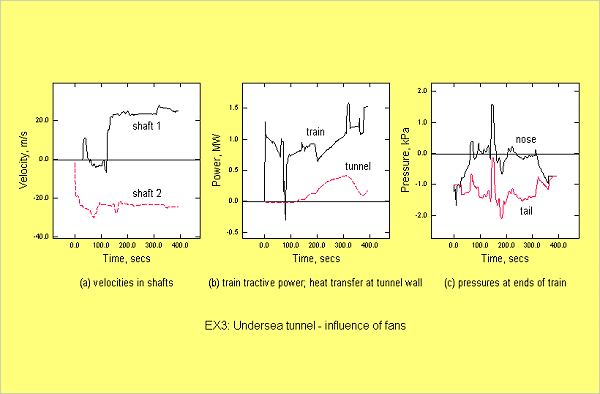


A 50 m2 single-track tunnel passes under a narrow stretch of sea. The elevations of the two portals relative to the horizontal, central section are 60 m and 85 m respectively and there is a fan shaft at each shoreline.
A 500 m long train enters the right hand portal at 50 km/h and proceeds through the tunnel with a constant power of 4 MW subject to an upper speed limit of 160 km/h. The fan in the left hand shaft is switched on 2mins after nose entry. The fan in the right hand shaft runs continuously.
One set of graphs shows velocities in the two ventilation shafts. There is an abrupt change of velocity in the inlet shaft when its fan is switched on (120 s).
The second set of graphs shows (i) the tractive power of the train and (ii) heat transfer between the air and the tunnel wall (broken red line). Because of the 160 km/h speed restriction, the train power never approaches the maximum available value (4 MW). Indeed, it is negative for a short period whilst the train travels downhill. This is possible because the vehicle has a regenerative braking system.
The third set of graphs show pressure histories that would be experienced by passengers near the front and rear of the train.
